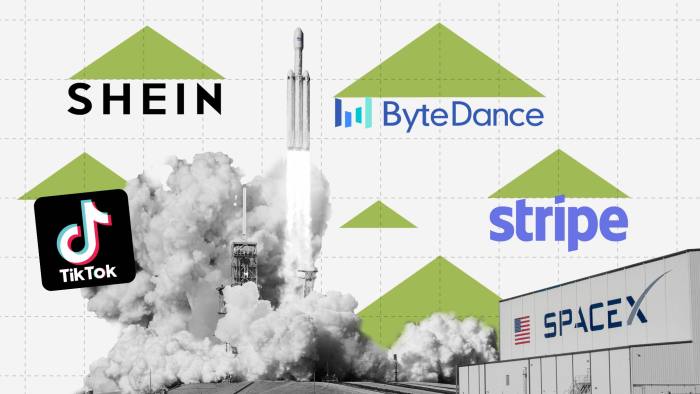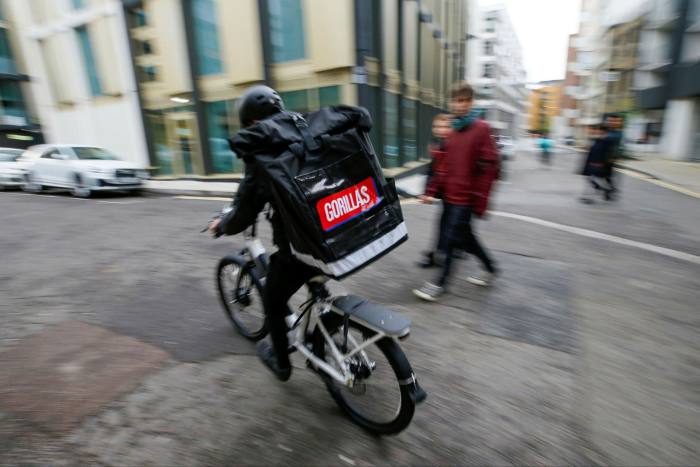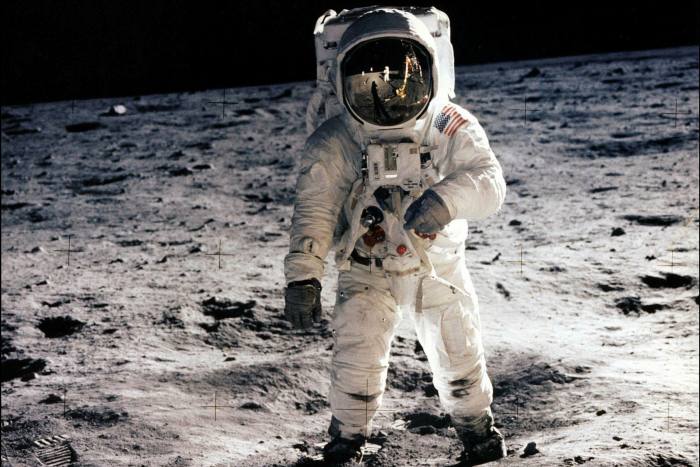Unlike the stock market, there are no daily market indices to broadcast the pain, and no individual share prices for anxious tech employees to watch as their personal wealth evaporates.
In fact, for many of the investors and entrepreneurs who have just lived through a historic boom in venture investing, it is even possible to pretend a crash isn’t happening at all. Loose rules that require only sporadic writedowns, the estimated value of private companies, have made it easy for many to turn the other way.
Josh Wolfe, co-founder of Lux Capital, likens the response to “the classic five stages of grief”. “We’re probably somewhere between anger and bargaining,” he says, referring to the emotions that follow denial. Yet investors and company founders, Wolfe adds, are still resisting the full implications of a market downturn that will have a profound effect on the start-up economy.
Only companies with an urgent need for capital have been forced into a full reckoning with reality, as investors putting in new money demand an up-to-date valuation. Klarna, the Swedish buy now, pay later company, sent shockwaves through the market for private fintech companies earlier this month when it raised money at a $5.7bn valuation — 87 per cent less than its venture capital backers judged it was worth a year ago.
Yet that savage price cut merely echoed a turn that had already set in for similar companies in the public markets. Shares in Affirm, a US buy now, pay later company that went public early last year, have also fallen 87 per cent from a peak last November. Fast-growing fintech company Block is down 78 per cent, after $130bn was wiped from its market value.
Many more will have to follow Klarna’s lead before the full extent of the reset sinks in. Despite some signs that people are getting more realistic about valuations, “We don’t yet have the full puking that’s required,” says Wolfe.
“Many companies are going to be in denial about the change in valuations until they run out of capital,” adds David Cowan, a partner at Bessemer Venture Partners.

Venture Capital’s deferred date with reality, when it comes, will be a watershed moment for the start-up world. Investors of all stripes have crashed the clubby world of VC in recent years in pursuit of companies promising higher growth rates than those available on the public stock market.
Much of that investment poured in last year, as the valuations of private start-ups were hitting a peak. Hedge funds, private equity firms, sovereign wealth funds, corporate VCs and mutual funds between them supplied two-thirds of all the money that went into venture investing globally last year, according to data provider PitchBook.
If those bets sour, it could lead to a retreat by many of the newcomers drawn to venture investing. And that, in turn, could deliver a shock to a tech start-up world that has grown used to ever-increasing amounts of capital.
The biggest funding rounds for US start-ups in 2021

-
Cruise — $2.75bn in January
-
Rivian — $2.65bn January
-
Rivian — $2.5bn in July
-
Robinhood — $2.4bn in February
The scale of the most recent venture boom has dwarfed that at the end of the 1990s, when annual investment peaked at $100bn in the US. By comparison, the amount of cash pumped into American tech start-ups last year reached $330bn. That was twice was much as the previous year, which was itself twice the level of three years earlier.
The flood of money into the private markets was matched by an equal flood into IPOs. According to Coatue, one of a new band of “crossover” investors that moved from the public markets into the VC world, $1.4tn found its way into promising growth companies globally last year, half of it in the form of venture capital and half through IPOs. That single-year surge, it calculated, was nearly $1tn more than the average of $425bn a year raised over the previous decade.
Fear of missing out
Carried along by this immense tide of capital, many venture capitalists now admit their market was overcome by a race to invest at almost any price — though most like to claim their own funds were able to sidestep the worst of the excesses.
“If there was one word to describe it, it was Fomo,” says Eric Vishria, a partner at Benchmark Capital. The “fear of missing out” he points to brought a stampede at the peak of the market. It wasn’t just the high prices investors were prepared to pay not to miss the boat: periods for conducting due diligence were drastically shortened and protections that investors usually build in to protect their investments fell by the wayside.
The steady economic expansion and relaxed financial conditions that followed the financial crisis more than a decade before had led many investors to view venture capital as a one-way bet, says Vishria. “Over the last 12 years, the right answer for almost every company was just to hold, and distribute [the shares] later,” he adds.
The most highly valued private start-ups, based on recent fundraisings

-
ByteDance — valued at $140bn in December 2020
-
SpaceX — valued at $127bn in May 2022
-
Shein — valued at $100bn in April 2022
-
Stripe — valued at $95bn in March 2021
“The incentives were lined up for keeping companies private and doing bigger and bigger rounds” of funding, adds Phil Libin, a venture investor and former CEO of note-taking app Evernote.
For company founders and employees, as well as the venture firms that backed them and the limited partners that supplied the capital, it looked like a gravy train. As valuations ratcheted higher, companies set up share-trading programmes for employees and executives to cash in, and investors were able to mark up their valuations with each new round of capital.
As a result, according to Vishria, the venture capital industry became bloated. Many companies stayed private far longer than was usual for a start-up, drawing on private investors rather than moving to the stock market. The size of venture funds exploded as investors put ever-larger amounts of capital to work. And investment discipline was loosened, with VCs spreading their bets widely across entire sectors rather trying to single out the small number of big winners that had traditionally provided the lion’s share of the industry’s profits.
The new investors that set the tone as venture investments ballooned included SoftBank’s Vision fund, which ploughed $100bn into the market. Tiger Global, which spread its bets widely, at one stage held more stakes in $1bn start-ups than any other investor. Both have since disclosed shattering losses: the Vision Fund registered a one-year loss of $27bn in May, the same month it emerged that Tiger had lost $17bn.
At the height of the boom, investors raced to back everything from electric vehicle companies like Rivian, which raised more than $5bn last year, to fringe tech bets that gambled on significant scientific breakthroughs to generate a return, such as nuclear fusion.
“The inbound [interest] was insane,” with two or three unprompted offers of financing a week, says Jeremy Burton, a former top Oracle executive who now heads a private software company called Observe. Those approaches have stopped, he adds — a reflection of the deep chill that has fallen over the venture market as entrepreneurs and investors wait for reality to sink in and a new consensus about valuation levels to take hold.
High-risk projects
The surfeit of capital pushed new fields of science forward at a faster pace. They included technologies like quantum computing and driverless cars, “moonshot” projects that were once considered too risky or long term even for venture capital funds, which typically take a seven- to eight-year view. Significant headway has been reported by start-ups in both fields, though the truly transformative breakthroughs that venture investors hoped for remain out of reach.
That treasure chest also helped to open up risky new sectors of the economy to private start-ups. The amount of money flowing into commercial space start-ups, for instance, doubled last year to more than $15bn, according to BryceTech. In the middle of the last decade, annual investments were around $3bn a year.
Private investment has backed a flurry of novel rocket technologies, satellite systems and earth imaging services. But start-ups have also ventured on to the frontier of space exploration, says space analyst Laura Forczyk. With Nasa planning a return to the moon, private companies hoping to ride in its wake are already plotting lunar activities that range from mining to building cloud computing centres.
“There’s a lot more commercial activity” in areas of space exploration and research that were once considered the province of governments, says Forczyk. If the money dries up, she says, “I don’t know if it’s going to be sustainable.”
Back on Earth, venture investors have been left reassessing bets in fields that were once considered among the hottest fields for start-ups. Howard Morgan, chair of New York venture firm B Capital, singles out the tech industry’s various attempts to revolutionise the transport sector as one cause of regret. The driverless car and electric scooter companies his firm invested in no longer look like they’re about to change the world, he says.
One company B Capital invested in, scooter company Bird, was valued at nearly $3bn at the start of 2020. After going public late last year, and taking the total amount of outside capital it has raised to nearly $900mn, Bird is now worth just $142mn.
“We’ve realised maybe the world isn’t ready for as many of these things as we thought,” says Morgan.
Asked which sectors are likely to prove the biggest disappointments, most venture investors list the same handful: the ultrafast delivery companies, like Gopuff and Gorillas, that have set out to bring customers their grocery items in as little as 20 minutes; fintechs that embarked on an expensive campaign to build large consumer businesses; and blockchain-based ventures that have been caught up in the crypto crash.

In a recent presentation to its own investors, Coatue depicted the tumbling valuations it expects in the tech world as a series of dominoes that are only just starting to topple. It predicted that big losses would spread, starting with unprofitable internet companies and reaching deeper into the crypto and fintech sectors, before eating into more solid-seeming sectors like software and semiconductors.
If predictions like these are correct, then investors who put the bulk of their latest funds to work at the peak of the market could be facing the sort of negative returns that have not been seen since the dotcom crash at the turn of the century.
In venture, timing is everything. The median venture fund that was raised in 1996, when the first internet boom was just gathering steam, returned 41 per cent a year over its life, according to Greenwich Associates, which tracks fund performance. But the median fund raised in 1999, at the peak of the bubble, went on to suffer a loss of 3 per cent a year.
A repeat of that performance could drive away many of the new investors who have recently been drawn to the market. Yet even if some, like SoftBank and Tiger Global, end up being less significant forces in future, several VCs predicted that the big investors who backed those firms will look for other vehicles to invest in, meaning that competition for investments will remain high.
Resetting expectations
For most tech start-ups, meanwhile, the world has just changed drastically.
With a large amount of cash still sitting in existing venture funds, start-ups with proven businesses that are at no immediate risk from a weakening economy can still look forward to raising money on favourable terms. Elon Musk’s private space company, SpaceX, was valued at $125bn in its latest round of funding in June, up from $74bn in April last year.
But most others have little choice but to adjust their goals. The boom in capital-raising has left many with plenty of cash in the bank to get through two or three years of a funding drought. Yet uncertainty about when capital will next be freely available, and on what terms, has fostered an inevitable caution.
Start-ups that shook Silicon Valley

WeWork
Peak valuation $47bn in 2019. The valuation a year later: $2.9bn
Theranos
Peak valuation $9bn in 2015. Closed in 2018
Klarna
Peak valuation $45.6bn in 2021. Last valuation $6.5bn in July 2022
Uber
Valuation at IPO $82.5bn in 2019. Current worth: $44.3bn
Instant delivery company Gopuff, which raised $3.4bn before the venture wave crested, is among the many well-capitalised start-ups that have moved in recent weeks to lay off staff and close facilities to conserve cash.
According to one Gopuff investor, the basic unit economics of its business — the amount of revenue it can generate on each order, relative to what that order costs — are sound. But, this investor added, the expensive race for growth that was once the goal of start-ups like this no longer makes sense when capital becomes constrained.
A similar calculation is being made across the start-up world. Payback periods are shortening. Hyper-growth is no longer the order of the day.

In recent years, investors became accustomed to seeing successful software start-ups tripling their revenues in the early years, says Burton at Observe. With the reset in expectations, he adds, “I’m not sure that still holds.” When his company gets past its early phase of product development and is ready to ramp up its marketing spending, he is already anticipating a less frenetic dash for growth: “It may be more measured or more economical growth, rather than growth at any cost.”
“There’s no question, growth at any price is gone for the next few years,” adds Morgan.
For venture investors, it may sound like a big step back after the go-go years that are coming to an end. Yet there is a reason for the equanimity many profess: a reset brings with it the chance to pay lower prices for future investments, to back start-ups that show greater financial discipline, and to face less competition from rival start-ups funded by deep-pocketed interlopers like SoftBank.
Vishria at Benchmark sums up the hope: “All the pretenders and the speculators will get wiped out. We’ll have the believers and the builders.”
It’s an appealing vision that many venture investors — by definition among the professional world’s greatest optimists — subscribe to. But it is still far from clear how long it will take the venture capital market to reset, or how many of today’s investors and start-ups will still be standing when it does.








